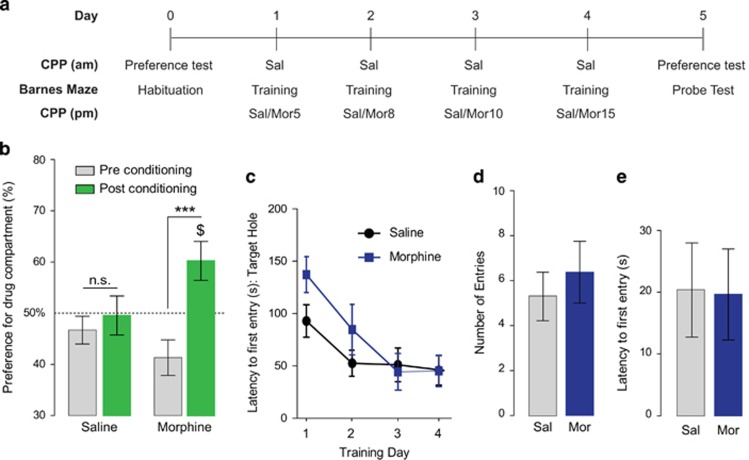Figure 5.
Morphine conditioning training does not alter the acquisition or retention of a spatial learning task. (a) Schematic representation of the behavioral paradigm used for morphine conditioning and Barnes maze training. For these experiments, we used both saline- and morphine-conditioned mice (n=8 mice in both groups). (b) Morphine conditioning induces a preference for the drug compartment. Results are represented as percentage of time spent in the morphine compartment pre- and post-conditioning. n.s. p>0.05, ***p<0.001 and $p<0.05 Wilcoxon test compared to 50% as baseline. (c) Acquisition of spatial Barnes maze memory is represented in seconds before first entry and mean time spent in the target hole. No differences were observed between morphine- and saline-treated animals across the days. Results are expressed in seconds +/− SEM. (d and e) Number of entries and latencies to first visit in the target hole during the probe test reveals that mice treated with morphine (mor) enter the target area of the Barnes maze with the same frequency (d) and latency (e) as saline-treated mice (sal). Results are expressed in number of entries in target hole and seconds +/− SEM, respectively.

